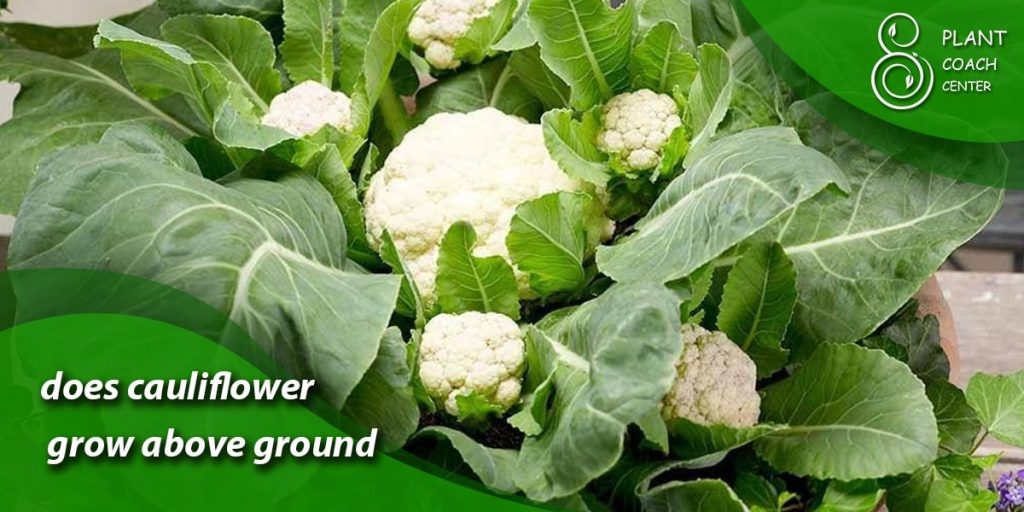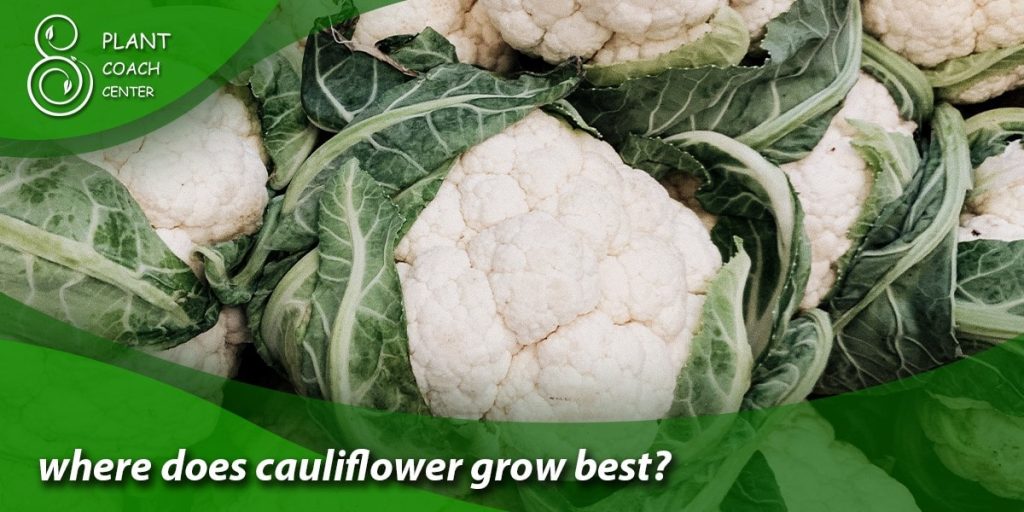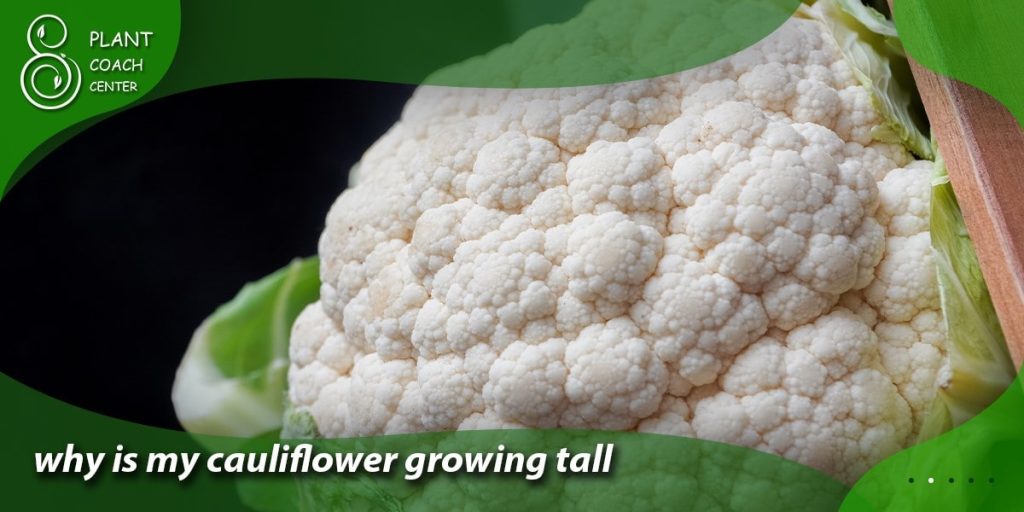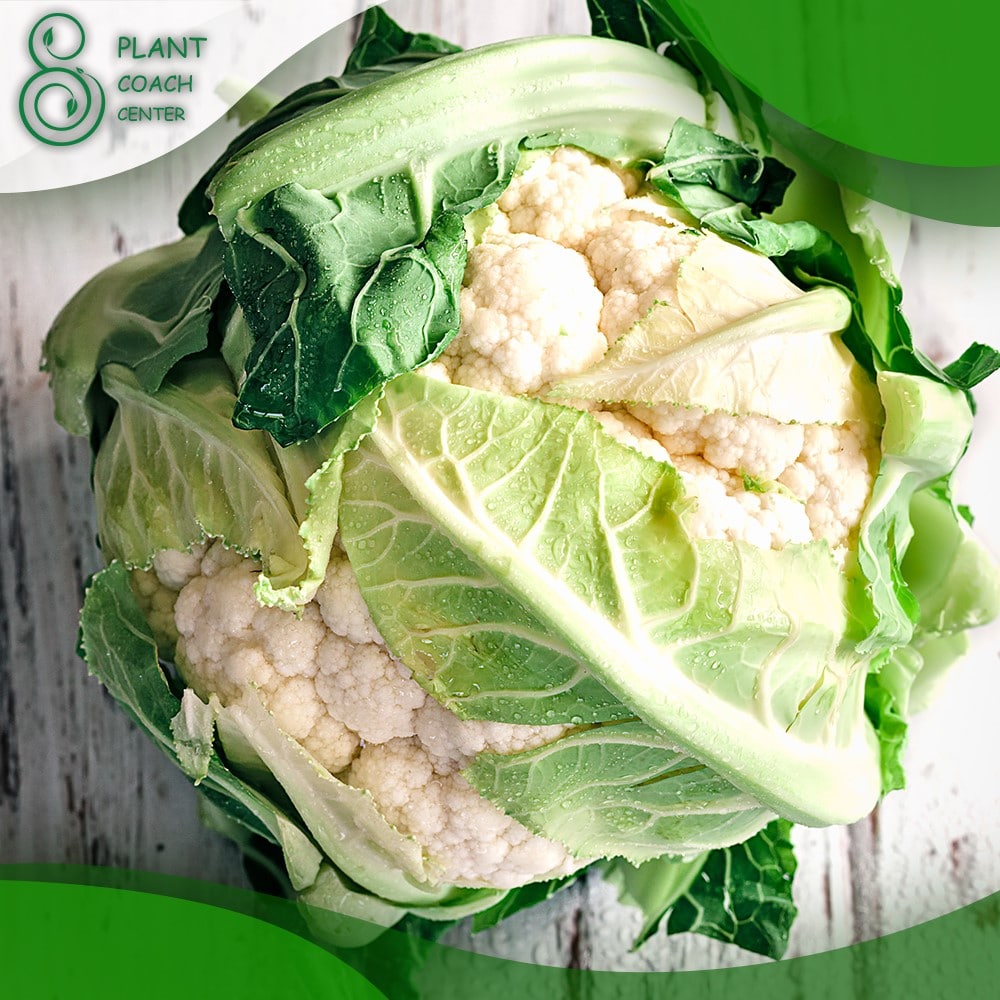When to Grow Cauliflower
Welcome to the captivating world of cauliflower cultivation, where the art of nurturing a seemingly unassuming vegetable transforms into a rewarding journey of flavors and textures. As the seasons dance and the gardening gloves emerge, the question of “when to grow cauliflower” takes center stage.
Whether you’re a seasoned gardener seeking to elevate your culinary escapades or a greenhorn eager to embark on a horticultural adventure, mastering the timing of cauliflower cultivation is the key to reaping nature’s bountiful delights. Imagine harvesting firm, snow-white curds or exploring the palette of vibrant colors that cauliflower can exhibit, all influenced by the precise moment you sow or transplant those seedlings.
In this verdant exploration, we’ll unravel the intricate tapestry of cauliflower growth, delving into optimal seasons, ingenious planting techniques, and the nurturing care required along the way. So, prepare to unearth the secrets of cauliflower’s seasonal symphony as we guide you through the art of nurturing this versatile cruciferous jewel from soil to table.

Cauliflower Seasons and Climate
Cauliflower, that delectable cruciferous cousin of broccoli and cabbage, is a cool-season vegetable that thrives under specific climatic conditions. Understanding the ideal seasons and climate for growing cauliflower is essential to achieving a successful and bountiful harvest.
Seasonal Preferences
Cauliflower’s preference for cooler temperatures makes it a prime candidate for spring and fall cultivation. In regions with mild winters, a fall planting can often result in better yields due to the lower temperatures and reduced risk of bolting (premature flowering).
Spring planting, on the other hand, offers the advantage of an early start and typically results in larger heads due to the more extended growing period.
Temperature Range
Cauliflower flourishes in temperature ranges between 60°F to 70°F (15.5°C to 21.1°C). Temperatures above 75°F (23.8°C) can trigger heat stress, leading to poor head formation and undesirable flavors. If you’re in an area with hot summers, consider starting your cauliflower indoors during late winter or early spring and transplanting the seedlings once the weather cools.
Sunlight and Day Length
Adequate sunlight is crucial for healthy cauliflower growth. Aim for at least six hours of direct sunlight daily. While cauliflower can tolerate slightly shaded conditions, reduced sunlight can slow growth and lead to less compact heads. Moreover, cauliflower’s response to day length plays a role in its development. Some varieties are photoperiod-sensitive, requiring a specific day length to form heads properly. Check the recommended day length for your chosen variety to ensure optimal results.
Climate Considerations
While cauliflower’s love for cooler temperatures is evident, it’s worth noting that the plant can still endure light frost, enhancing the sweetness of the heads. However, extended periods of freezing temperatures can severely damage or kill the plants. In colder climates, row covers, or cold frames can provide extra protection and extend the growing season.
Sowing Seeds or Transplants
The decision to start your cauliflower journey from seeds or transplants can significantly influence the success of your harvest. Each method has unique advantages and challenges, catering to different levels of gardening expertise and local conditions. Understanding the nuances of sowing seeds and using transplants can empower you to make the right choice for your cauliflower cultivation.
Sowing Seeds
Starting cauliflower from seeds grants you complete control over the plant’s development from the very beginning. It’s a cost-effective option, as seeds are generally more affordable than transplants. Begin indoors about 6 to 8 weeks before your intended outdoor planting date.
Use seed trays or pots filled with a quality seed starting mix. Plant seeds about ¼ inch deep and maintain consistent moisture and warmth for successful germination. As seedlings grow, thin them out to ensure proper spacing.
Transplanting Seedlings
Transplants offer a head start, especially in regions with shorter growing seasons or unpredictable weather. Purchasing healthy seedlings from nurseries or starting your own provides a strong foundation for your cauliflower garden.
Transplants are less susceptible to certain pests and diseases affecting young seedlings. When transplanting, harden off the seedlings by gradually exposing them to outdoor conditions over a week to prevent shock. Plant them at the appropriate spacing and depth in well-prepared soil.
Choosing the Best Approach
Your choice between seeds and transplants depends on your local climate, growing season, and gardening experience. If you have a shorter growing season, transplants might be the way to go, giving you a head start. However, starting from seeds offers a deeper connection to the plant’s growth journey and allows for more excellent variety selection.
Whichever method you choose, providing adequate care and attention as your cauliflower matures will ultimately determine the success of your harvest.
A Word of Wisdom
Regardless of your approach, seeds and transplants require consistent care and attention. Regular watering, proper nutrition, and protection from pests and diseases are vital. By understanding the strengths of each method and tailoring your choice to your unique circumstances, you’re well on your way to nurturing thriving cauliflower plants that will soon grace your table with their nutritious and delicious heads.

Choosing the Right Variety
Embarking on the journey of cauliflower cultivation is a flavorful adventure that extends beyond the classic white heads you might be familiar with. The world of cauliflower encompasses a vibrant array of colors, shapes, and sizes, each offering a unique taste and visual appeal. Selecting a suitable variety not only influences the aesthetics of your garden but also determines the flavors and culinary possibilities that await.
Traditional White Cauliflower
The iconic white cauliflower variety is a staple in kitchens worldwide. It features tight, compact curds that deliver a delicate, slightly nutty flavor when cooked. This variety tends to be versatile and well-suited for various culinary applications, from steaming to roasting and even transforming into creamy cauliflower mash.
Colorful Varieties
Beyond the traditional white, there’s a spectrum of colors to explore. Vibrant orange, rich purple, and even striking green cauliflower varieties grace the garden with bold hues. These colorful variants often retain their pigments even after cooking, making them visually striking and nutritious. Experiment with recipes to highlight their unique flavors and create eye-catching dishes.
Romanesco Cauliflower
The mesmerizing fractal pattern of Romanesco cauliflower is a visual wonder that catches the eye. Its pale green hue and intricate spirals offer a milder flavor than traditional cauliflower, making it a favorite for raw dishes and salads. Roasting Romanesco florets brings out a delightful nutty taste.
Choosing Based on Growing Conditions
While flavor and appearance are important considerations, choosing cauliflower varieties that thrive in your local climate and growing conditions is also wise. Some varieties are better suited to heat tolerance, while others are more cold-hardy. Investigate the specific requirements of each variety and match them with your garden’s environment for optimal results.
Hybrid vs. Heirloom
Another aspect to consider is whether to opt for hybrid or heirloom cauliflower varieties. Hybrid varieties are often bred for traits like disease resistance, uniformity, and productivity. Heirloom varieties, on the other hand, can offer a connection to heritage flavors and gardening practices. Both have merits, so your choice depends on your gardening goals and preferences.

Preparation and Soil Health
Creating a thriving haven for your cauliflower plants begins with meticulous soil preparation. The foundation you lay for your garden beds directly impacts your cauliflower crop’s health, growth, and ultimate success. A nutrient-rich, well-draining soil fosters strong root development and enhances the harvested heads’ flavor and texture. Here’s how to ensure your soil is primed for cauliflower success.
Soil Composition
Cauliflower thrives in a well-draining soil rich in organic matter. Before planting, amend your soil with compost or well-rotted manure to enhance its structure, water-holding capacity, and nutrient content. Aim for a slightly acidic to neutral pH level of 6.5 to 7.0 for optimal nutrient availability.
Loosening and Aeration
Cauliflower roots need room to expand and access oxygen. Loosen the soil to a depth of about 12 to 18 inches (30 to 45 cm) using a garden fork or tiller. This improves drainage and promotes proper root development, ensuring your plants are equipped to absorb nutrients efficiently.
Adding Nutrients
As heavy feeders, cauliflower plants benefit from a nutrient boost before planting. Incorporate a balanced fertilizer that provides essential macronutrients like nitrogen, phosphorus, and potassium. Alternatively, consider using organic slow-release fertilizers that release nutrients over time.
Managing Drainage
Poor drainage can lead to root rot and hinder growth. If your garden has heavy clay soil, improve drainage by adding organic matter, such as compost or aged pine bark. Raised beds can also be a valuable solution in areas prone to waterlogging.
Cover Crops and Green Manure
Use cover crops like legumes or grains during the off-season to improve soil structure and fertility. These cover crops can be turned into the soil as green manure, enriching the soil with organic matter and nitrogen.
Mulching Magic
After planting, apply a layer of organic mulch around your cauliflower plants. Mulch helps retain soil moisture, suppresses weeds, and maintains a consistent soil temperature. As the mulch breaks down, it further enriches the soil with nutrients.
Test and Monitor
Regularly test your soil’s pH and nutrient levels to ensure your cauliflower plants have the ideal growing environment. This proactive approach allows you to address any imbalances before they affect plant health.
Planting and Spacing
As you embark on your cauliflower-growing journey, strategically planting your seedlings plays a pivotal role in determining the health and yield of your crop. The spacing between plants and the depth at which you plant them directly influences the growth of the cauliflower heads. Here’s a guide to help you achieve optimal planting and spacing for a successful harvest.
Planting Depth
When transplanting seedlings, ensure they are planted at the same depth they were growing in their containers. The plant’s crown (where the stems meet the roots) should align with the soil surface. Planting too deep can lead to poor head formation, while planting too shallow can expose the roots to drying out.
Spacing Matters
Adequate spacing between cauliflower plants prevents overcrowding, which can result in smaller heads and increased susceptibility to diseases. Standard spacing is usually between 18 to 24 inches (45 to 60 cm) apart in rows, with rows spaced around 24 to 36 inches (60 to 90 cm) apart. However, the exact spacing can vary based on the variety you’re growing, so refer to the specific recommendations for your chosen cultivar.
Companion Planting
Utilize companion planting strategies to optimize space and deter pests naturally. Cauliflower benefits from companions like carrots, celery, and onions, which can help repel certain pests and promote healthier growth.
Successive Planting
For a continuous harvest, consider successive planting. This involves planting cauliflower seedlings in batches at a few weeks intervals. As one batch matures and is harvested, the next batch will be ready for picking, extending your harvest window.
Container Cauliflower
Limited on space? Cauliflower can be grown in larger containers or pots at least 12 inches (30 cm) deep and wide. Just ensure that the container receives sufficient sunlight and has good drainage.
Support for Varieties with Large Heads
Some cauliflower varieties produce larger heads that might require additional support to prevent them from flopping over or touching the ground. Using stakes or a lightweight cage can help keep the heads upright.

Caring for Cauliflower
Nurturing your cauliflower plants requires consistent care and attention throughout their growth journey. From proper watering to vigilant pest management, each step contributes to developing robust heads ready to grace your culinary creations. Here’s a comprehensive guide to ensure your cauliflower plants thrive.
Watering Wisdom
Cauliflower plants thrive with consistent moisture but avoid overwatering, which can lead to diseases like rot. Aim for 1 to 1.5 inches (2.5 to 3.8 cm) of water per week through rain or irrigation. Water at the base of the plant to keep the leaves dry, preventing fungal growth.
Fertilization Fundamentals
Fertilize your cauliflower plants to ensure they receive nutrients. Apply a balanced fertilizer high in nitrogen every 3 to 4 weeks. Alternatively, opt for slow-release fertilizers for a more gradual nutrient release.
Weed Control
Keep your cauliflower patch weed-free to prevent competition for nutrients and water. Weeds can also harbor pests that might target your cauliflower plants.
Mulching Magic
Maintain a layer of organic mulch around your cauliflower plants. Mulch helps regulate soil temperature, retain moisture, and inhibit weed growth. Just be sure to keep the mulch away from the base of the plant to prevent rot.
Pest and Disease Management
Watch for common pests such as aphids, cabbage loopers, and worms. Consider natural pest control methods like releasing beneficial insects or applying neem oil. Preventive measures like crop rotation can also help minimize disease risks.
Blanching for Tender Heads
As the cauliflower heads develop, you might notice them turning yellow due to sunlight exposure. To maintain their snowy white appearance and tenderness, consider blanching the heads by gently folding the leaves over them or tying them with a rubber band. This shields the heads from direct sunlight.
Support for Large Heads
If growing varieties with larger heads prone to flopping, use stakes or lightweight support cages to keep the heads upright and prevent breakage.
Harvesting Time
Timing is critical when it comes to harvesting cauliflower. Wait until the heads reach a desirable size and are firm. Avoid letting them get too large, as they can become overly mature and develop a bitter taste. Use a sharp knife to cut the head from the stem, leaving a few leaves attached.

Harvesting Timing and Techniques
The moment of truth arrives as your cauliflower plants reach their pinnacle of growth and readiness. Harvesting cauliflower at the right time is a delicate balance that requires keen observation and a gentle touch. The optimal timing and techniques you employ directly influence the flavor, texture, and overall quality of the heads you’ll soon be savoring at your table.
Readiness Indicators
Cauliflower heads are ready for harvest when they reach a suitable size, are compact and firm to the touch, and display a consistent color that matches the variety. For most traditional white varieties, heads should be around 6 to 8 inches (15 to 20 cm) in diameter. Avoid letting them grow overly large, as they might become rigid and develop a bitter taste.
Preventing Overripeness
Delaying the harvest can lead to overripeness, resulting in a grainy texture and off-flavors. Check the heads regularly once they start forming, as they can mature quickly.
Harvesting Techniques
Harvesting cauliflower requires a gentle touch to avoid damaging the heads or the surrounding foliage. Here’s a step-by-step guide to ensure a successful harvest:
Choose the Right Time
Choose a sunny morning or late afternoon for harvesting. Avoid harvesting during the heat of the day to prevent wilting.
Inspect the Heads
Examine the cauliflower heads closely. They should be dense and solid, with tight curds and no signs of discoloration, rot, or insect damage.
Cutting Method
Use a sharp, clean knife or garden pruners to cut the head from the stem. Position the blade slightly above the head, making a clean cut through the stem. Leave a few leaves attached to the head to protect it during transportation and storage.
Trimming
Once the head is removed, trim any remaining leaves or stem parts, leaving just a few inches of stem attached to the head.
Storage Preparation
If you plan to wait to use the heads, prepare them for storage. Refrigerate them promptly to retain their freshness and flavor.
Conclusion
In the intricate tapestry of gardening, cultivating cauliflower emerges as an art that blends patience, precision, and passion. From understanding the nuances of seasonal timing to embracing diverse varieties and perfecting planting techniques, every step contributes to the journey of nurturing these cruciferous gems.
As you embark on your cauliflower-growing adventure, remember that the wisdom shared here on PlantCouchCenter.com serves as a guiding beacon, offering insights into soil preparation, care, and harvesting. Whether you’re a seasoned green thumb or just starting to embrace your inner horticulturist, the journey from soil to table showcases the culmination of your efforts—a symphony of flavors and textures that stand as a testament to the harmony you’ve fostered between nature’s bounty and your nurturing hands.
When should I plant cauliflower?
Spring and fall are ideal seasons for cauliflower planting.
How deep to plant cauliflower?
Plant at the same depth as in the container.
How do I know when to harvest cauliflower?
Harvest when heads are firm, about 6-8 inches in diameter.







